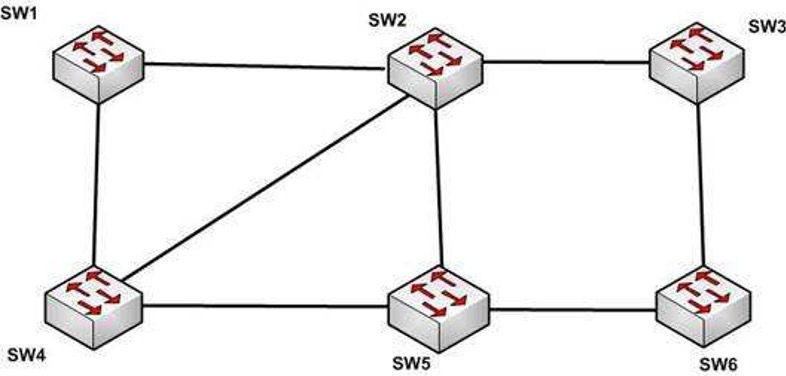Why is it recommended to use Spanning Tree Protocol (STP) in Local Area Networks (LANs) with redundant paths?
A. To prevent loops
B. To manage VLANs
C. To load balance across different paths
D. To prevent forwarding of unnecessary broadcast traffic on trunk links
Explanation:
Spanning Tree Protocol (STP) is a Layer 2 protocol used in LANs to maintain a loop-free network topology by recognizing physical redundancy in the network and logically blocking one or more redundant ports.
An example of switch redundancy is shown in the diagram below. The connection from SW4 to SW2, while providing beneficial redundancy, introduces the possibility of a switching loop.

STP probes the network at regular intervals to identify the failure or addition of a link, switch, or bridge. In the case of any topology changes, STP reconfigures switch ports to prevent loops. The end result is one active Layer 2 path through the switch network.
STP is not used for management of Virtual Local Area Networks (VLANs). VLAN Trunking Protocol (VTP) simplifies the management of VLANs by propagating configuration information throughout the switching fabric whenever changes are made. In the absence of VTP, switch VLAN information would have to be configured manually.
STP is not used to load-balance traffic across different redundant paths available in a topology. Load balancing allows a router to use multiple paths to a destination network. Routing protocols, Routing Information Protocol (RIP), RIPv2, Interior Gateway Routing Protocol (IGRP), Enhanced IGRP (EIGRP), and Open Shortest Path First (OSPF) support load balancing. Similarly, multiple links can be combined in a faster single link in switches. This can be achieved with the Fast EtherChannel or Gigabit EtherChannel features of Cisco switches.
STP does not prevent forwarding of unnecessary broadcast traffic on trunk links. This is achieved by manually configuring VLANs allowed on the trunk, or through VTP pruning.